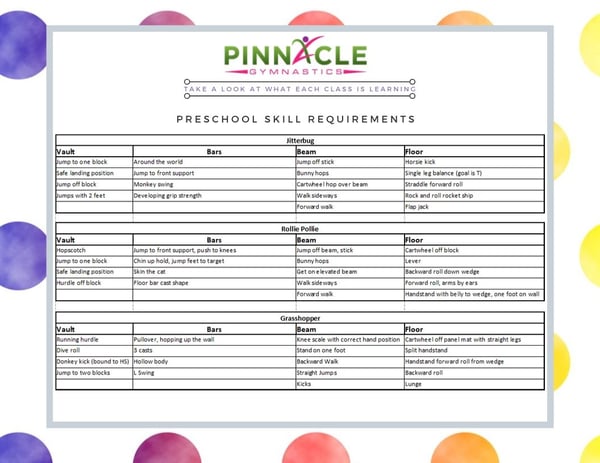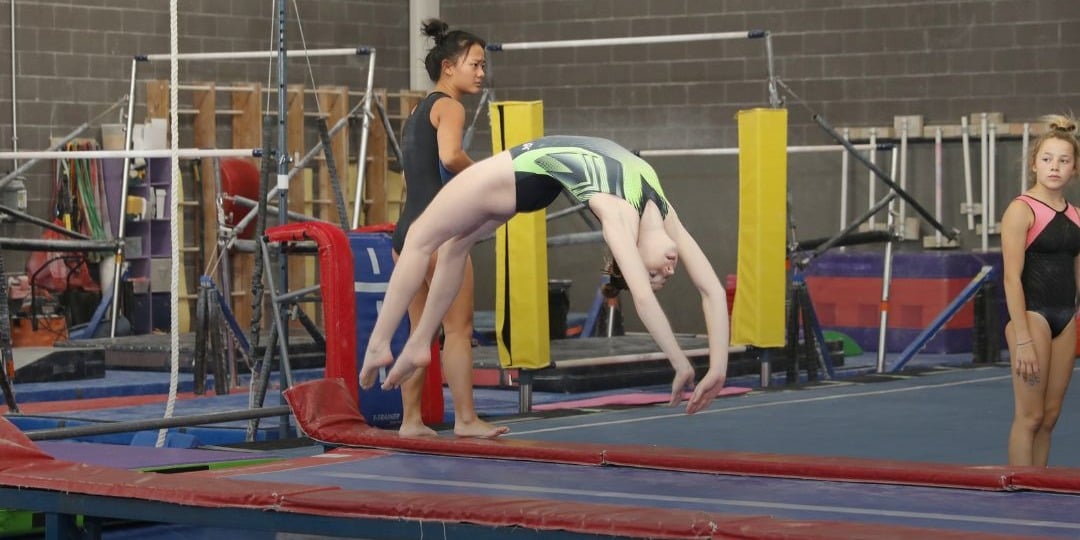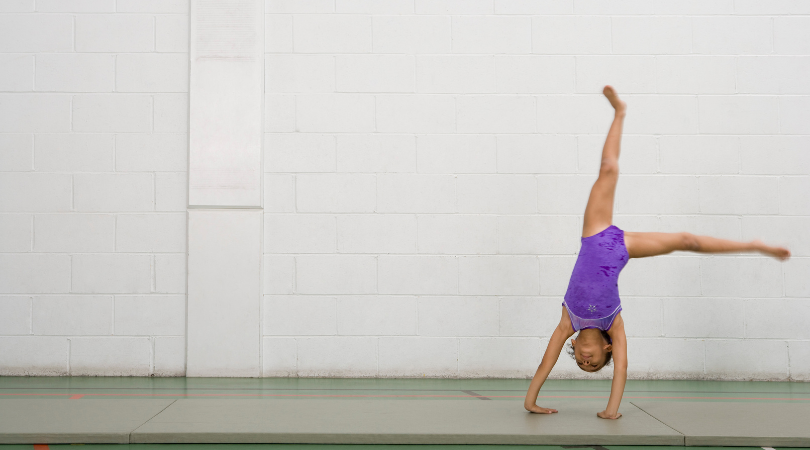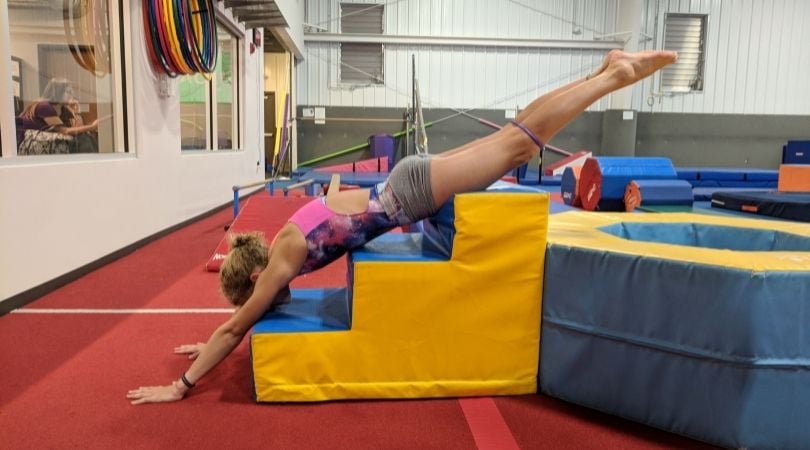Gymnastics skill requirements shape a program's lesson plans. Skill requirements for each level create a progressive training schedule for proper skill development. Having a set list of skill requirements for each level allows coaches and athletes to focus on a set of attainable goals in Gymnastics Classes for Kids.
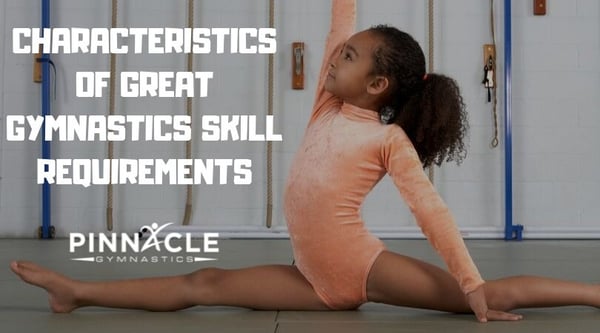
Characteristics of Great Skill Requirements
- Progressive - skill requirements should start with basic movements and small sections of skills and progress to complete skills done independently. You should be able to trace a skill requirement from the beginner level to the advanced level in a slightly more challenging form as the level increases in difficulty.
- Equipment Specific - skill requirements in recreational gymnastics may require additional matting, such as a wedge mat, panel mat, or octagon for beginner and even intermediate gymnasts to be successful.
- Realistic - gymnastics is a challenging sport that requires a lot of repetition, strength, and technical skills. Breaking skills down into pieces allows gymnasts to be successful and move through the levels at the right pace.
- Used in Lesson Plans - skill requirements are only effective if they are used in the program's lesson plans. Without lesson plans, it is hard to track how many times athletes are working on each skill requirement.
Sample Skill Requirements
Developing a set of skill requirements should be a group project. Involve your club's owner and leadership team to create a set of skill requirements that match your program's need. Things to take into consideration include: equipment used at each level, number of levels, length of time average athlete should spend at each level, student:teacher ratio, and end goals. Consider using the lower levels of USA Gymnastics as a launching point. Typically, even Level 1 skills are too hard for a beginner. It is important to break each skill down into smaller parts to identify a natural set of progressions. Click here to see Pinnacle Gymnastics' complete skill requirement list.
Lesson Planning with Skill Requirements
- Easy to read - your staff should be able to determine the set up of mats and equipment as well as dictate the appropriate drill at each station for each level
- Visual - the use of pictures helps staff and athletes understand how equipment should be set up
- Planned - lesson plans are not created on the fly. They are a series of well thought out progressions leading to the mastery of skill requirements over time.
- Evaluated - at the end of each cycle, evaluate lesson plans for their safety, how well they worked, and how they can be improved the next time around
In addition, to having quality skill requirements, take into account the person writing the lesson plans. Lesson plans should be written by leadership staff that has a strong foundation of child development in addition to gymnastics technical knowledge.
In conclusion, developing a set of skill requirements takes time, education, and revision. Furthermore, lesson planning plays a vital role in the success of students mastering skill requirements. Help take your program to the next level: continue educating yourself on best practices and new ideas!
Learn more:

